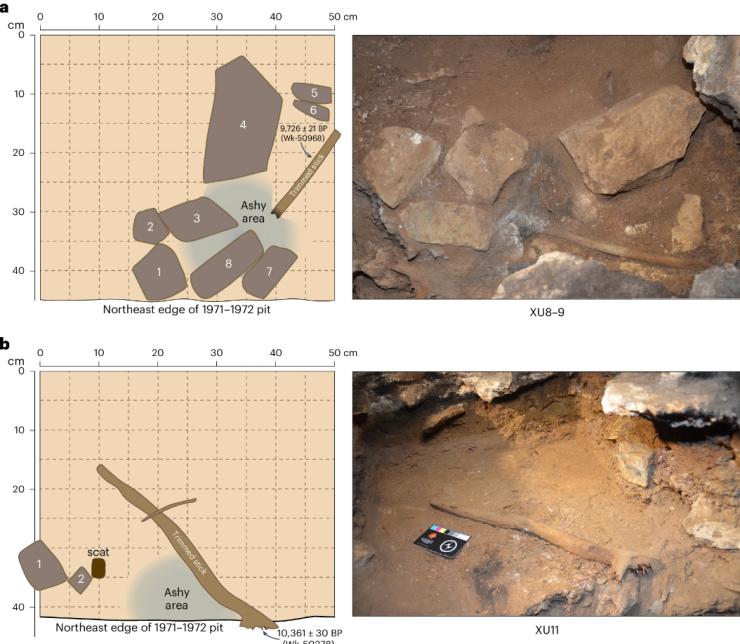Aboriginal rituals have been practiced continuously since at least the end of the last ice age
Categories: Nálezy v Asii a Oceánii
Archaeologists from Monash University, in collaboration with the GunaiKurnai Land and Waters Aboriginal Corporation (GLaWAC), have discovered evidence of continuously practiced rituals dating back to the end of the last Ice Age, approximately 11,000 to 12,000 years ago, that are still known today.
The results of the study, published in the scientific journal Nature Human Behaviour, document the discovery of two small ritual hearths in Cloggs Cave at the foot of the Australian Alps. Inside each hearth is a protruding trimmed wooden stick made of Casuarina (horsetail) wood smeared with grease. One slightly burnt end of the stick still stuck out of the ashes in the middle of the fire pit. The fire itself did not burn for long, nor did it reach any significant heat. No remains of food were discovered around.
Microscopic and biochemical analysis of the sticks showed that they had come into contact with animal fat. Parts of the sticks were coated with lipids - fatty acids that cannot dissolve in water and can therefore remain on objects for a long time. The decoration and positioning of the sticks, the small size of the fire, the absence of food residues and the presence of smeared fat on the sticks suggest that the hearth was used for something other than cooking.
A sequence of sixty-nine radiocarbon dates, including the wood grain of the sticks, dates one hearth to 11,000 years ago and the other, a deeper one, to 12,000 years ago. Comparison of the observed physical characteristics of the hearths with 19th century Gunaikurnai ethnographic records indicates that this type of ritual has been in continuous use for at least 12,000 years!
"The ritual consisted of attaching an object belonging to the sick person to the end of a stick that was smeared with fat and covered with feathers. The stick was then placed diagonally into the ground before a fire was lit underneath it. The mulla-mullung (shaman/shaman) chanted the name of the sick person, and once the stick fell out of the fire, the ritual was completed," described Alfred Howitt, a government geologist and ethnographer in 1887.
"The association of these archaeological findings with the recent customs of the indigenous Gunaikurnai shows a 12,000-year transmission of knowledge. Nowhere else on Earth has archaeological evidence of such a specific cultural practice been traced before," said Professor Bruno David of the Monash University, adding that preserved wooden artefacts are rarely found in archaeological sites from the Pleistocene and early Holocene.
The discoveries and results of the study represent an incredible 500 generations of cultural transmission of ethnographically documented ritual practice dating back to the end of the last Ice Age. Elder Russell Mullett, a member of the Gunai/Kurnai people, commented on the study that the discovery serves as a reminder of how Aboriginal people maintain a living culture deeply connected to their ancient past, as evidenced by ritual still practiced today.
Roman Nemec
Sources: phys.org, nla.gov.au, nature.com
 The GunaiKurnai area and the location of Cloggs Cave
The GunaiKurnai area and the location of Cloggs Cave
 The three largest pieces of wood from the two miniature hearths in Cloggs Cave, showing details of the two carved sticks
The three largest pieces of wood from the two miniature hearths in Cloggs Cave, showing details of the two carved sticks
 Two miniature fire pits with the trimmed sticks not yet separated from the sediments immediately after they were uncovered during excavations at Cloggs Cave
Two miniature fire pits with the trimmed sticks not yet separated from the sediments immediately after they were uncovered during excavations at Cloggs Cave
The article is included in categories: